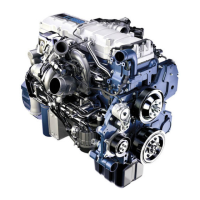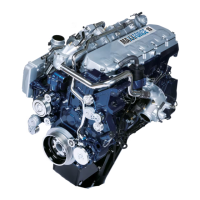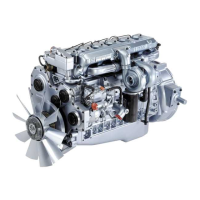170 5 HARD START AND NO START DIAGNOSTICS
8. Engine Systems
Figure 198
Purpose
To inspect engine and control system for damage
(leaks, open connections, or harness chaffing)
Tools
• Inspection lamp
Procedure
WARNING: To avoid serious personal injury,
possible death, or damage to the engine or
vehicle, read all safety instructions in the “Safety
Information” section of this manual.
1. Inspect fuel supply system (including tank and
lines) for leaks and damage.
2. Check high-pressure oil line from high-pressure
pump to supply manifold for major leaks.
3. Check engine for oil leaks.
4. Inspect cooling system for leaks.
5. Check s ensor, relay, and control module
connections. All connections must be seated, in
good condition, and free of damage or corrosion.
NOTE: The engine will no t start if th e fo llo wing
components are disconnected or damaged:
• Injection Pressure Regulator (IPR) valve
• Camshaf t Position (CMP) sensor
• Crankshaft Position (CKP) sensor
• Electronic Control Module (ECM)
• Injector Driver Module (IDM)
6. Inspect battery cable and fuse connections for
corrosion. All connections must be seated, in
good condition, and free of damage or corrosion.
7. Inspect engine wiring harness for correc t routing
and protection against rubbing or chaffing.
8. Check the following components of the air
induction system for leaks:
• Inspect air filter housing for damage or
distortion that could allow unfiltered air into
the engine.
• Inspect air filter housing for end seal
movement. End seal movement is indicated if
the seal contact area is polished. A polished
contact are a indicates that unfiltered air has
passed by th e filter element and into the
engine.
• Inspect air filter element for end cap dents,
holes, damaged seals, an d soot.
• Inspect a i r intake hos es and clamps for
tightness and positioning over sealing beads.
• Inspect the chassis mounted Charge Air
Cooler (CAC) and piping.
NOTE: Un filtered air will cause accelerated
engine wear.
9. Record identified problems on Diagnostic Form.
• If problems were identified, repair as
necessary and verify if a hard start and
no start condition still exists.
• If no problems were identified, continue with
the next diagnostic test.
Possible Caus es
• Loose or leaking fuel supply lines could cause fuel
system to lose prime.
• Kinked or blocked fuel supply lines c an restrict fuel
flow.
• Massive or excessive fuel or oil leaks
• Coolant leaks could indicate serious engine
damage .
• Damaged or incorrectly installed electronic
connectors
• Blockage in the air induction syste m
EGES-270-1
Read all safety instructions in the "Safety Information" section of this manual before doing any proced ures.
Follow all warnings, cautions, and notes.
©August 2008 Navistar, Inc.

